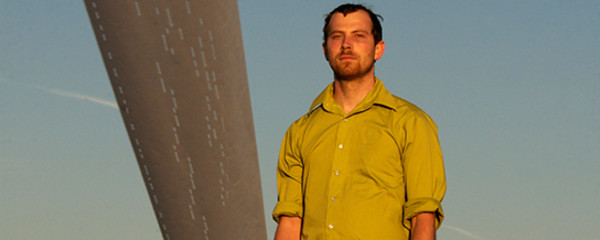Ethan Rose’s Artist Tips
Most of what Portland-based found-sound fanatic Ethan Rose records are things meant to be forgotten: […]
Ethan Rose’s Artist Tips
Most of what Portland-based found-sound fanatic Ethan Rose records are things meant to be forgotten: […]

Most of what Portland-based found-sound fanatic Ethan Rose records are things meant to be forgotten: antique player pianos, music boxes, the bells of a carillon, and soon, the wheezing of a dusty pipe organ. The melodies are near random, coming from punching a buckshot of holes in strips of paper (how music boxes are “programmed”), or breaking off nubs in player piano reels. Once fed through a rack of modern-day effects tools, these quietly scratching, hissing, singing ambient tapestries–many of which comprise the soundtrack to Gus Van Sant’s film Paranoid Park and this September’s Spinning Pieces (Locust)–are some of the most incomparably lovely works to come out of the Northwest in recent memory. Here’s how Rose puts it all together.
Have a Plan
Everything I record is part of a larger artistic narrative. I started out with music boxes, then it made sense to record player pianos, and then I found the carillon. It was perfect for what I’m doing; I traveled to Stanford and climbed a tower to record it. Next up is this enormous, all-but-abandoned pipe organ I found at an old theater in Portland. What I put a microphone to is as deliberate as putting a song–notating it–on paper.
Record Everything
Every sound happens in an environment: it has a context and a history. Capturing this can be as important as choosing the sound itself. I barely, if ever, use noise-reduction equipment. The first player piano recordings were done in this antique shop, and I could hear Martha, the owner, shuffling around, probably trying to figure out why I was so fascinated with her old collection of music-tech detritus. In “The Dot and the Line” you can just barely hear police sirens from outside on Belmont Avenue.
Perfect Your Microphone Placement
With the pianos, I used two microphones. One stayed right next to the paper, catching the sound of rubbing paper and this odd rhythm that whomever built the thing could’ve never imagined being so important a century or whatever later. Obviously, the second mic sat further out in the room, catching the melody. I did the same thing when I recorded the carillon; put a mic right up against the growling machinery, which added a strange, very cool industrial shade to the final product.
Know Your Sound
I spent a lot of time researching the carillon. I wanted to know its past, how it worked–everything. I spent time at the library. I interviewed the caretaker. This approach should apply to anything. Know the sound, and you’ll know how it fits, not to mention the basic technicalities of capturing it as accurately as possible. Say you’re recording a bird–know why it’s singing, and you’ll know what to record next.

